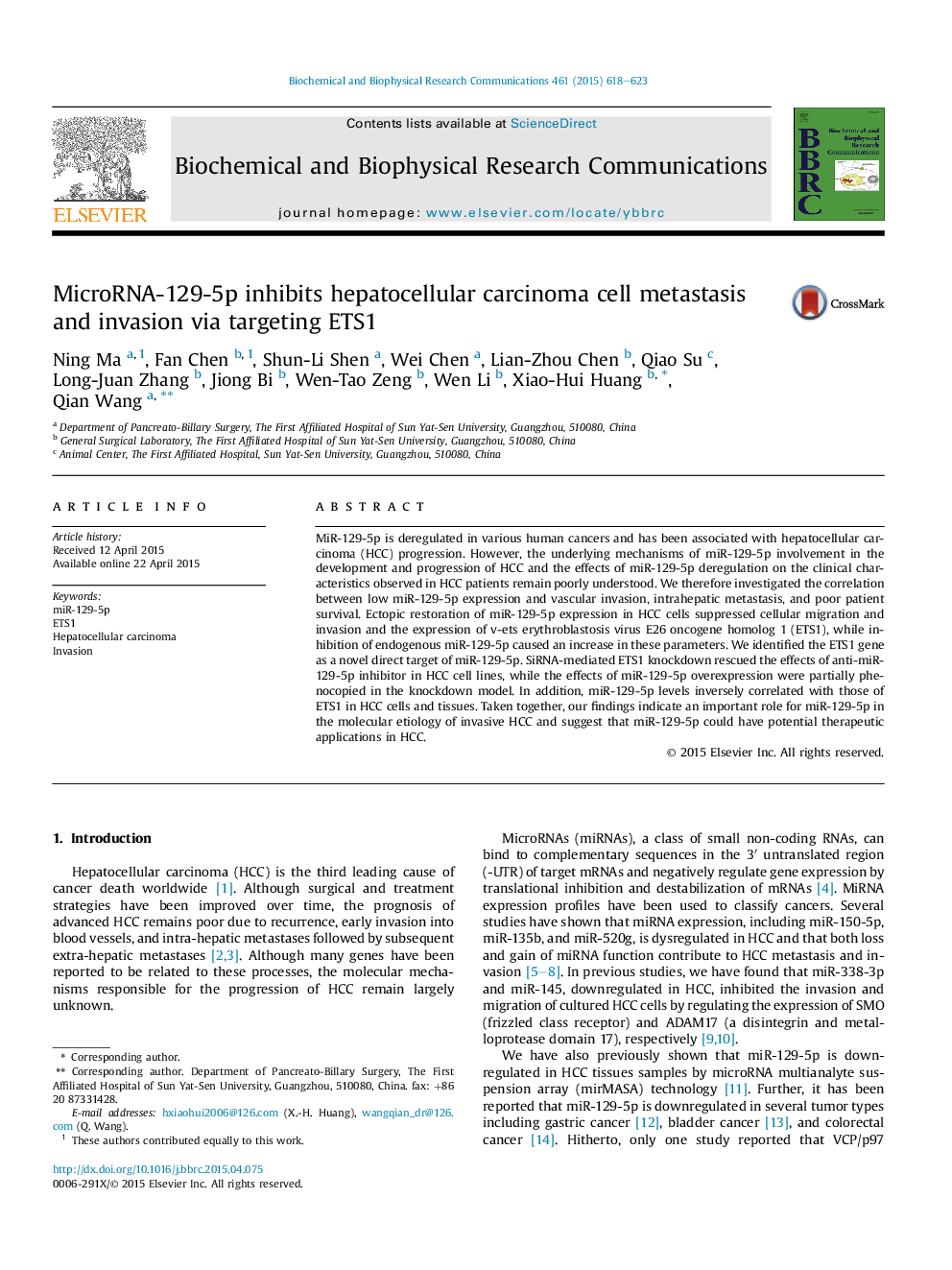| Article ID | Journal | Published Year | Pages | File Type |
|---|---|---|---|---|
| 1928089 | Biochemical and Biophysical Research Communications | 2015 | 6 Pages |
Abstract
MiR-129-5p is deregulated in various human cancers and has been associated with hepatocellular carcinoma (HCC) progression. However, the underlying mechanisms of miR-129-5p involvement in the development and progression of HCC and the effects of miR-129-5p deregulation on the clinical characteristics observed in HCC patients remain poorly understood. We therefore investigated the correlation between low miR-129-5p expression and vascular invasion, intrahepatic metastasis, and poor patient survival. Ectopic restoration of miR-129-5p expression in HCC cells suppressed cellular migration and invasion and the expression of v-ets erythroblastosis virus E26 oncogene homolog 1 (ETS1), while inhibition of endogenous miR-129-5p caused an increase in these parameters. We identified the ETS1 gene as a novel direct target of miR-129-5p. SiRNA-mediated ETS1 knockdown rescued the effects of anti-miR-129-5p inhibitor in HCC cell lines, while the effects of miR-129-5p overexpression were partially phenocopied in the knockdown model. In addition, miR-129-5p levels inversely correlated with those of ETS1 in HCC cells and tissues. Taken together, our findings indicate an important role for miR-129-5p in the molecular etiology of invasive HCC and suggest that miR-129-5p could have potential therapeutic applications in HCC.
Related Topics
Life Sciences
Biochemistry, Genetics and Molecular Biology
Biochemistry
Authors
Ning Ma, Fan Chen, Shun-Li Shen, Wei Chen, Lian-Zhou Chen, Qiao Su, Long-Juan Zhang, Jiong Bi, Wen-Tao Zeng, Wen Li, Xiao-Hui Huang, Qian Wang,
